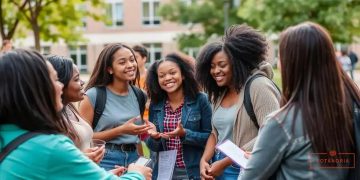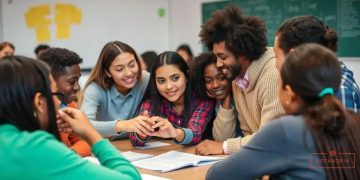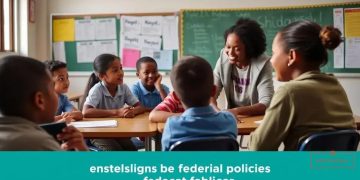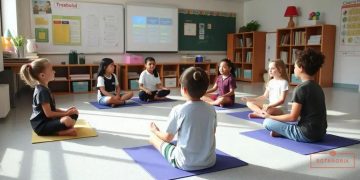LGBTQ+ content in education: why it matters now
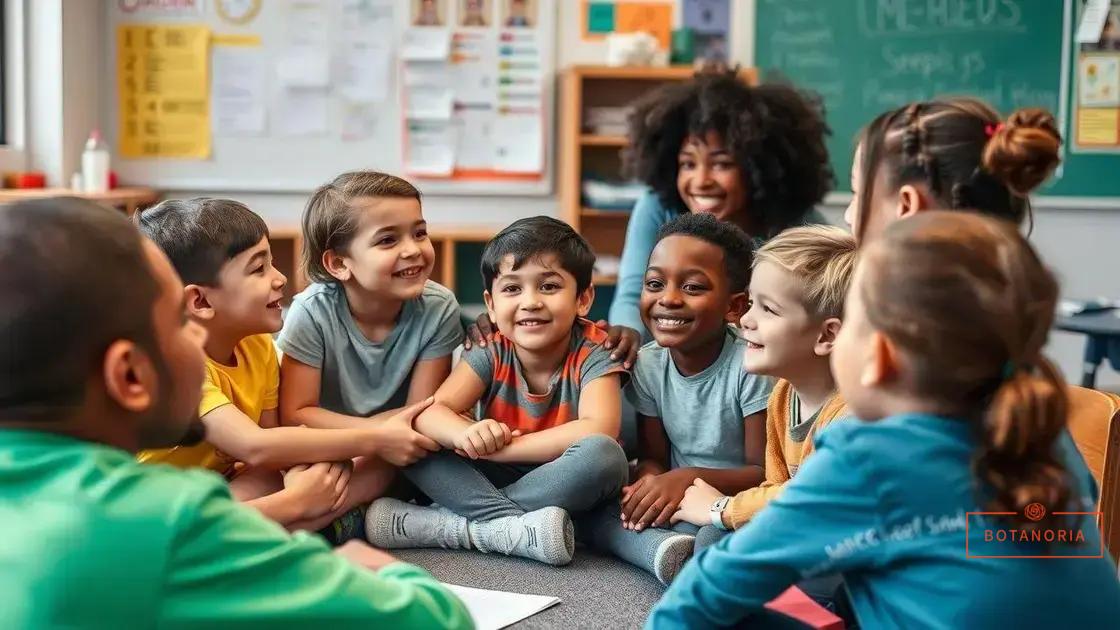
LGBTQ+ content in education enhances inclusivity, promotes understanding, and supports emotional well-being by ensuring representation and addressing misconceptions about diverse identities.
LGBTQ+ content in education plays a vital role in shaping an inclusive environment for all students. Have you ever wondered how these discussions can affect a child’s sense of belonging and self-acceptance? Let’s explore their importance together.
Understanding LGBTQ+ identities in the classroom
Understanding LGBTQ+ identities in the classroom is crucial for fostering an inclusive environment. When students see themselves represented, they are more likely to feel accepted and valued. This understanding promotes empathy and reduces bullying, making schools a safer space for everyone.
What are LGBTQ+ identities?
LGBTQ+ stands for lesbian, gay, bisexual, transgender, and queer/questioning, with the plus sign representing other sexual orientations and gender identities. Each identity encompasses a unique experience that can enrich classroom discussions.
Key Points to Consider
- LGBTQ+ identities are diverse and complex.
- Education about these identities encourages acceptance and respect.
- Supporting LGBTQ+ students helps reduce mental health issues.
Creating an understanding of these identities starts with educators. Teachers should encourage dialogue and provide a safe space for students to express themselves. This could include integrating relevant materials, books, and resources into the curriculum.
Furthermore, understanding LGBTQ+ identities allows peers to better relate to one another. When students learn about the experiences of their classmates, they cultivate empathy and understanding. As a result, relationships within the classroom strengthen, leading to a more positive social environment.
Incorporating LGBTQ+ topics
Incorporating topics about LGBTQ+ identities into lessons is important for normalizing these conversations. This can be done through historical perspectives, literature, and art that highlight LGBTQ+ figures. By teaching about these individuals, students learn about their contributions to society and can feel empowered by their identities.
Providing opportunities for students to share their experiences, if they choose, fosters an inclusive space. It also helps others understand the challenges and triumphs that LGBTQ+ individuals face every day. Recognizing these perspectives is essential in developing a well-rounded view of the world.
Ultimately, understanding LGBTQ+ identities in the classroom is not just beneficial for LGBTQ+ students; it enriches the learning experience for all students. Emphasizing respect and empathy prepares students to be thoughtful and engaged citizens in a diverse world.
Benefits of LGBTQ+ representation in education
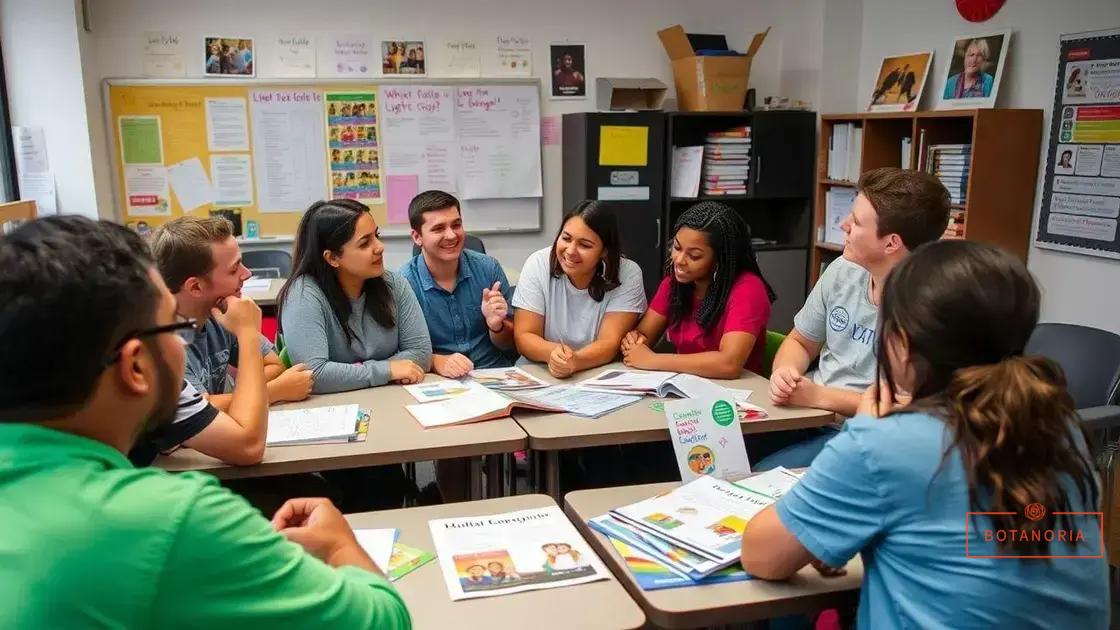
The benefits of LGBTQ+ representation in education are significant and multifaceted. When students see themselves reflected in their curriculum, they develop a sense of belonging. This representation is crucial for fostering a positive self-image among LGBTQ+ youth.
Enhances Emotional Well-being
When LGBTQ+ students recognize their identities in what they learn, it can enhance their emotional well-being. Feeling represented lowers feelings of isolation and anxiety that many may experience in traditional school settings. In addition, it can improve students’ overall mental health.
Promotes Inclusivity
- LGBTQ+ representation encourages a culture of inclusivity.
- Diverse perspectives foster understanding and acceptance.
- This inclusivity helps combat bullying and discrimination.
Incorporating LGBTQ+ themes into lessons gives students a broader understanding of society. This helps them grow into empathetic adults who respect differences. Moreover, when students learn about influential LGBTQ+ figures, they can see how diverse identities have shaped history.
Educational environments that celebrate diversity encourage collaboration and friendship among students of different backgrounds. By normalizing discussions around LGBTQ+ issues, schools can create safe spaces for all. This acceptance leads to greater cooperation and respect in the classroom.
Improved Academic Performance
Studies show that when students feel safe and accepted, their academic performance tends to improve. LGBTQ+ representation can contribute to higher motivation and engagement in school activities. Furthermore, it encourages students to be active participants in their learning environment.
Teaching about LGBTQ+ topics also prepares all students for life beyond school. When they enter the workforce, they will encounter diverse groups of people. Having an understanding of different identities promotes teamwork and collaboration in professional settings.
Ultimately, the advantages of LGBTQ+ representation in education include creating a safer, more inclusive, and productive learning environment for all students. This representation lays the groundwork for a more accepting society overall.
Creating inclusive lesson plans
Creating inclusive lesson plans is essential for ensuring that all students feel represented and valued in the classroom. This approach not only supports LGBTQ+ students but also benefits everyone by promoting an understanding of diversity.
Incorporating Diverse Perspectives
One key step in making lesson plans inclusive is to include diverse perspectives. This means integrating materials that feature LGBTQ+ authors, historical figures, and narratives. When students see these representations, they can relate better to the content and understand the contributions of different communities.
Utilizing Various Teaching Methods
- Incorporate group discussions that allow students to share their views.
- Use multimedia resources, such as videos and podcasts, to engage students.
- Plan activities that allow for creativity, like art projects or role-playing scenarios.
Utilizing various teaching methods caters to different learning styles. This inclusivity encourages participation from all students, regardless of their background or identity.
Additionally, it’s essential to establish ground rules that promote respect in the classroom. Discussing LGBTQ+ topics can be sensitive, so creating a safe environment for open dialogue is vital. This helps students feel more comfortable sharing their experiences and asking questions.
Adapting Materials and Resources
Adapting existing materials to reflect an inclusive perspective is also important. This could involve modifying texts to include LGBTQ+ narratives or providing alternative resources that highlight underrepresented voices. For instance, when discussing historical events, teachers can highlight the contributions of LGBTQ+ activists and their impact on society.
Furthermore, collaboration with LGBTQ+ organizations can provide additional resources and support for lesson planning. These partnerships can enhance the curriculum and provide teachers with tools to address various topics effectively.
Ultimately, creating inclusive lesson plans leads to a more enriching educational experience for all students. This effort not only supports LGBTQ+ individuals but also promotes empathy, respect, and understanding among classmates.
Addressing misconceptions about LGBTQ+ topics
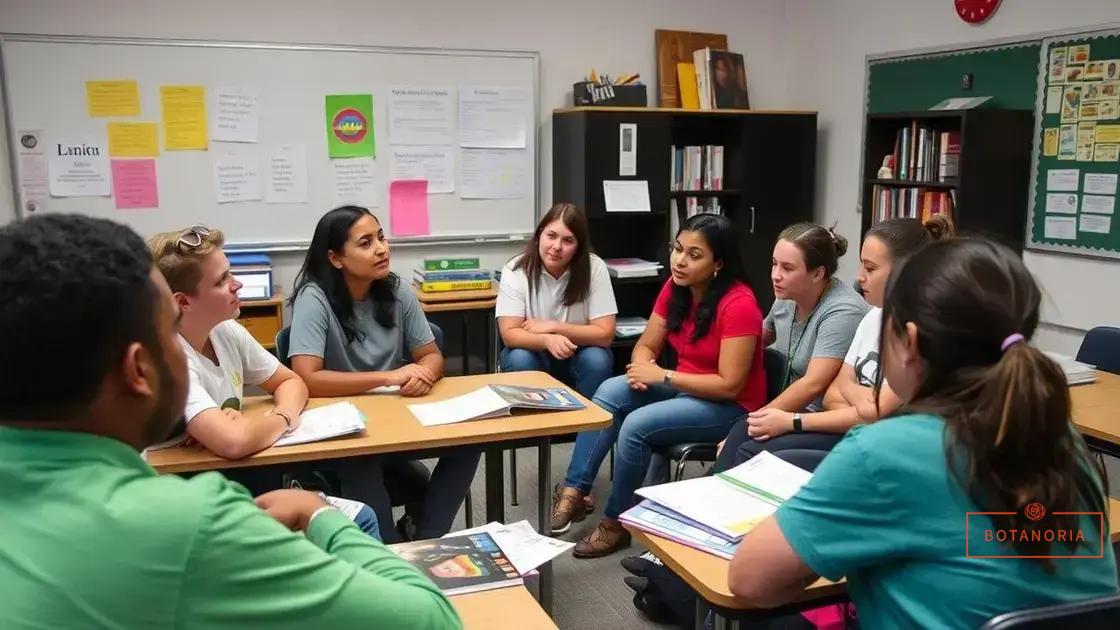
Addressing misconceptions about LGBTQ+ topics is essential for fostering understanding and acceptance in schools. Many students may hold incorrect beliefs due to a lack of information. Educators play a crucial role in clarifying these misconceptions to create a safer environment.
Common Misconceptions
One common misconception is that being LGBTQ+ is a choice. In reality, sexual orientation and gender identity are intrinsic parts of who a person is. It is important to communicate this understanding effectively in classrooms, emphasizing that everyone deserves respect, regardless of their identity.
Importance of Accurate Information
- Accurate information helps dispel myths.
- Understanding the facts promotes empathy.
- Education reduces stigma and fear.
When teachers provide accurate and clear information, it opens the door for meaningful dialogue. This allows students to ask questions and learn how to support their peers. Discussing the realities of LGBTQ+ lives can build a sense of community and connection among students.
Additionally, providing resources such as books and articles that highlight LGBTQ+ experiences can further educate students. These resources can challenge stereotypes and showcase the diverse realities individuals face. It’s essential for students to see that LGBTQ+ people have always existed and have made significant contributions to society.
Creating an Open Dialogue
Encouraging an open dialogue about LGBTQ+ topics is key to addressing misconceptions. Teachers can create a safe space where students feel comfortable discussing these issues. This includes establishing ground rules for respect and openness during discussions.
Involving students in conversations about their own misconceptions can also be beneficial. This encourages critical thinking and helps students learn to navigate their beliefs thoughtfully. By tackling these misconceptions together, students can foster a more inclusive atmosphere in their classrooms.
Overall, addressing misconceptions about LGBTQ+ topics is a vital part of education that promotes understanding and acceptance. This effort contributes to a more inclusive school environment for everyone.
Engaging parents and the community in discussions
Engaging parents and the community in discussions about LGBTQ+ topics is essential for fostering understanding and support. When schools involve families and local communities, it creates a united front in promoting inclusivity.
Importance of Involvement
Involvement from parents and the community helps create a supportive environment for LGBTQ+ students. It reinforces the message that everyone deserves respect and acceptance regardless of their sexual orientation or gender identity. Parents who are informed about LGBTQ+ issues can better support their children.
Strategies for Engagement
- Host community workshops to educate families about LGBTQ+ topics.
- Create newsletters that include LGBTQ+ resources and information.
- Encourage open conversations at home about different identities.
Hosting workshops allows parents to learn about how to support their children and understand the challenges they might face. When families are educated, they can effectively advocate for their children within the school system.
Additionally, creating channels for communication can make a difference. Schools might use newsletters or social media to share information and resources that specifically address LGBTQ+ issues. This keeps parents informed and involved, sparking meaningful dialogues at home.
Building Community Partnerships
Engaging local organizations can also enhance discussions about LGBTQ+ topics. Partnerships with LGBTQ+ advocacy groups can provide crucial resources and expertise. These organizations often have programs and events that schools can participate in, fostering a sense of community.
Local events such as pride celebrations or awareness campaigns can be great opportunities for schools and families to engage together. Participation in such events showcases community support for LGBTQ+ individuals and helps normalize these discussions.
Overall, engaging parents and the community in discussions about LGBTQ+ topics strengthens the support network for students. This collective involvement creates safer schools where everyone can thrive.
In conclusion, fostering a supportive and inclusive environment for LGBTQ+ students is vital to creating a positive educational experience. By addressing misconceptions, engaging parents and the community, and implementing inclusive lesson plans, schools can contribute to a culture of respect and understanding. When everyone works together, students feel valued and safe, leading to better academic outcomes and emotional well-being. The efforts made today will help shape a brighter and more inclusive future for all students.
FAQ – Frequently Asked Questions about LGBTQ+ Content in Education
Why is LGBTQ+ representation important in schools?
LGBTQ+ representation helps all students feel valued and understood, fostering a supportive learning environment.
How can parents get involved in discussions about LGBTQ+ issues?
Parents can attend workshops, join school meetings, and communicate openly with their children about LGBTQ+ topics.
What misconceptions about LGBTQ+ identities should be addressed?
Common misconceptions include the belief that LGBTQ+ identities are a choice and that they do not exist in certain communities.
How can teachers create inclusive lesson plans?
Teachers can include diverse perspectives, utilize various teaching methods, and adapt existing materials to reflect LGBTQ+ identities.

